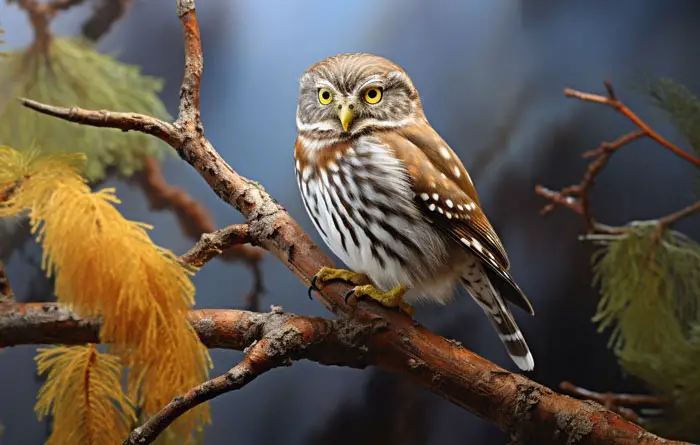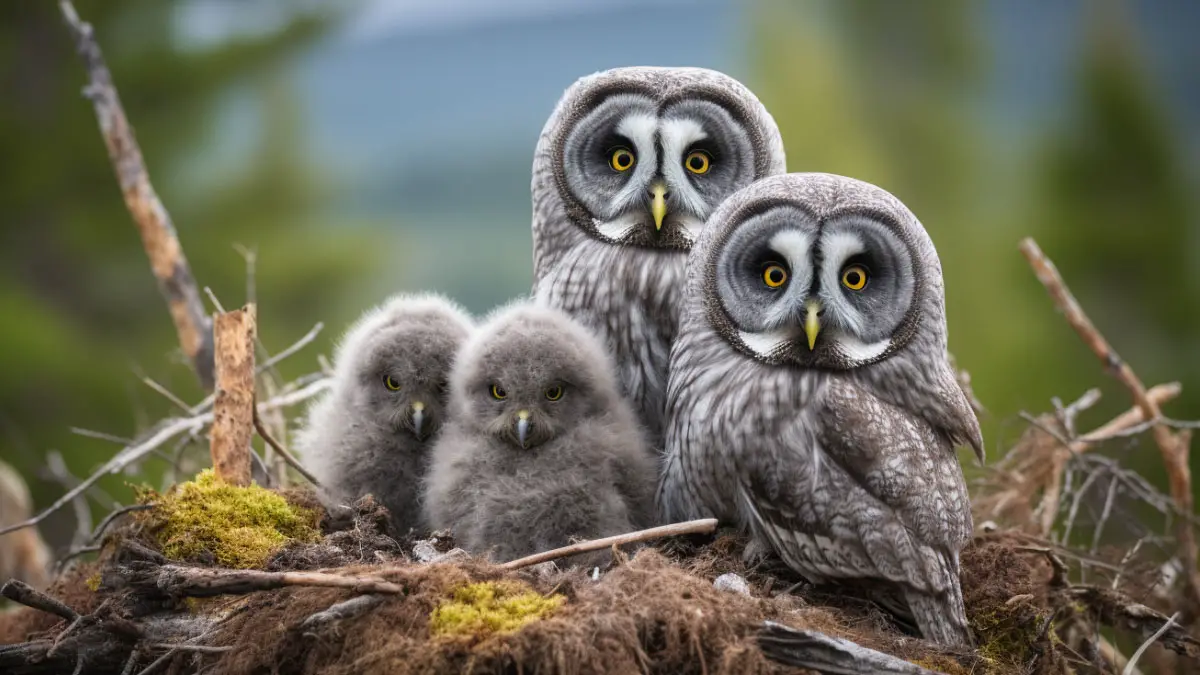Owls are known to eat small ground mammals such as snakes, mice, squirrels, and frogs. Sometimes, scarcity causes owls to pick different animals, like birds, as part of their menu.
But do owls eat hummingbirds? Yes, certain species of owls eat hummingbirds. These are the small owls belonging to the Strigidae family. These owls hunt hummingbirds in a state of torpor. It is because they live in the same habitat and are a good protein source.
Read on to find out the strategies owls use to catch hummingbirds.
Do Owls Eat Hummingbirds?
Yes, certain owl species eat hummingbirds. Most of these owls belong to the Strigidae family. Owls that eat hummingbirds are small in stature and are also called “owlets.”
They hunt and target small birds, including hummingbirds, especially during the breeding season, to meet higher energy demands. This means the timespan is during winter or early spring.

Hummingbirds enter an involuntary resting state called a torpor state. In this state, their body temperature drops, and they have reduced mental and physical activity. Owls usually attack hummingbirds when they are in a state of torpor and are defenseless.
The owl species that eat hummingbirds are as follows:
Ferruginous Pygmy Owl (Glaucidium brasilianum)
At 6 inches tall, this owl is found in Central, South, and North America. They live in both desert and rainforest regions. They use the perch-and-dive strategy to capture resting hummingbirds.
They are crepuscular, meaning they actively hunt during the day, mostly at dawn or dusk. As hummingbirds are also diurnal or crepuscular, they are often a visible target.

Northern Pygmy Owl (Glaucidium californicum)
At 7 inches tall, this owl is found in North America. They use the sit-and-wait strategy. They sit atop the highest tree where they can hardly be seen.
Once they spot a vulnerable hummingbird, they perch from branch to branch to get closer to its prey. They then pounce on the hummingbird’s neck with their powerful razor-sharp talons.
They are also crepuscular, which coincides with the timing of hummingbirds.

Eastern Screech Owl (Megascops Asio)
At 6-10 inches tall, this owl is found in Eastern North America, particularly across Canada and Mexico. They also use the sit-and-wait strategy to hunt hummingbirds.
Unlike the pygmy owls, the Eastern Screech Owl is strictly nocturnal. This means they are active and prey on hummingbirds at night.
They possess excellent night vision, hearing abilities, and the quietest feathers. It allows them to silently sneak up on hummingbirds at night or raid their nests.

Elf Owl (Micrathene Whitneyi)
The elf owl is the smallest species of owl in the world. They are mostly found across the Southwestern USA to Central Mexico and Baja California.
At a height of 4.9-5.7 inches, these ferocious little predators use the perch-and-dive strategy to take down hummingbirds.
They are also nocturnal beings, preying on victims only at dusk and at night. Before pouncing on the hummingbird, it pauses and hovers in the air to maximize its aim.

Why Do Owls Eat Hummingbirds?
It may come as a surprise that one bird species would eat another bird species. However, in the animal kingdom, it is perfectly normal.
Owls are known as ‘birds of prey’ and are carnivorous. Much of the time, their diet includes invertebrates like worms, insects, small mammals, and amphibians.

The main reasons why owls eat hummingbirds are as follows:
Good Source Of Protein
Hummingbirds have a high nutritional value. It can provide sufficient protein, fat, and carbohydrates for the owl to function well, especially during the breeding season.
Same Habitat
Owls and hummingbirds live in the same type of habitat. These habitats include grasslands, wetlands, rainforests, mountains, and agricultural areas.
This makes hummingbirds an available food source for owls, compared to other prey.
Scarcity
In rough environments where the owl has difficulty finding its usual prey, the hummingbird presents itself as the solution to its appetite. An owl with chicks needs food to survive in rough climates.
To survive and feed their young, owls hunt down hummingbirds. Owls do not specifically target only hummingbirds. They strike down any prey near them.
Torpor State
When hummingbirds are in a state of torpor, their body dials down partial mental and motor activity. This reduced physical inactivity makes them an easy target in front of owls.
A nocturnal owl searching for prey at night sees the hummingbirds roosting in this state and makes the move.
How Do Owls Catch Hummingbirds?
Owls catch hummingbirds either in the daytime or night. It depends on whether the owl is diurnal or nocturnal.
Once an owl spots a vulnerable hummingbird, it stealthily and inaudibly swoops down near the target. Then, it pounces or grasps the hummingbird with their powerful talons.

The owl stabs the hummingbird repeatedly with its talons until it dies. Once dead, it either swallows the whole hummingbird or stores it somewhere else to consume later.
An owl’s talons have the strength to firmly grasp and carry 1.4 times the size of its weight.
How Do Hummingbirds Protect Themselves From Owls?
Hummingbirds protect themselves from owls in the following ways:
- Hummingbirds are smaller in size than owls, measuring only 3-5 inches in length. This gives them an incredible amount of speed of up to 55 km/hr. Their quick agility helps them evade the clutches of predators by moving forwards, backward, or sideways.
- Hummingbirds build their nest at least 10-90 feet high above tree trunks or thin branches. This makes them extremely difficult to locate as these tiny creatures are out of an owl’s reach.
- They also have incredible eyesight and can spot predators from a distance.
- They have colorful, iridescent feathers that can quickly daze and confuse owls during a chase.
- They have a special ability where they can detach their tail feathers whenever owls catch them. The owl is left catching the expendable tail feathers, allowing the hummingbird to escape from its clutches. These tail feathers grow back again.
- Hummingbirds are known to be aggressive little creatures as well. When push comes to shove, they will face the owl head-on to protect itself or its nest.

FAQ
Below are some frequently asked questions related to owls and hummingbirds.
Yes, hummingbirds are scared of owls due to their predatory behavior, carnivorous tendencies, and relatively large size.
Yes, owls and hummingbirds share some similar characteristics. Sharp visual acuity, agility, swift flight, and preference for living in a similar habitat are some of the key similarities.
No, owls prey on hummingbirds at other times as well. It is difficult to chase a hummingbird head-on as they are extremely agile and fast.
This is why owls choose to sneak up silently from behind when hummingbirds are perching on a tree.
Final Thoughts
It should be clear now that certain species of owls, particularly small owls, eat hummingbirds. They may do so out of necessity or because they live in the same habitat. Some of these owls are crepuscular, while others are nocturnal.
Hummingbirds possess a strong defense mechanism. Owls tend to prey on them when they are perching or in a state of torpor. The ability of the owl to fly inaudibly allows them to catch hummingbirds almost perfectly.







